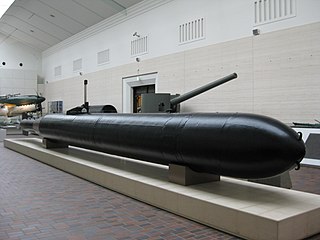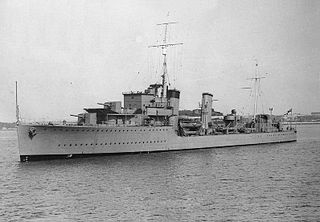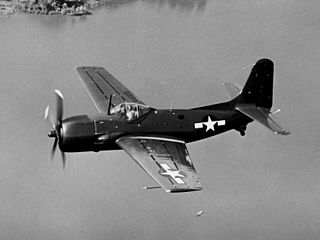
A modern torpedo is an underwater ranged weapon launched above or below the water surface, self-propelled towards a target, and with an explosive warhead designed to detonate either on contact with or in proximity to the target. Historically, such a device was called an automotive, automobile, locomotive, or fish torpedo; colloquially a fish. The term torpedo originally applied to a variety of devices, most of which would today be called mines. From about 1900, torpedo has been used strictly to designate a self-propelled underwater explosive device.

A tank locomotive or tank engine is a steam locomotive which carries its water in one or more on-board water tanks, instead of a more traditional tender. Most tank engines also have bunkers to hold fuel; in a tender-tank locomotive a tender holds some or all of the fuel, and may hold some water also.

The Lexington-class aircraft carriers were a pair of aircraft carriers built for the United States Navy (USN) during the 1920s, the USS Lexington (CV-2) and USS Saratoga (CV-3). The ships were built on hulls originally laid down as battlecruisers after World War I, but under the Washington Naval Treaty of 1922, all U.S. battleship and battlecruiser construction was cancelled. The Treaty, however, allowed two of the unfinished ships to be converted to carriers. They were the first operational aircraft carriers in the USN and were used to develop carrier aviation tactics and procedures before World War II in a series of annual exercises.

Kaiten were crewed torpedoes and suicide craft, used by the Imperial Japanese Navy in the final stages of World War II.

The Benham class of ten destroyers was built for the United States Navy (USN). They were part of a series of USN destroyers limited to 1,500 tons standard displacement by the London Naval Treaty and built in the 1930s. The class was laid down in 1936-1937 and all were commissioned in 1939. Much of their design was based on the immediately preceding Gridley and Bagley-class destroyers. Like these classes, the Benhams were notable for including sixteen 21-inch (533 mm) torpedo tubes, the heaviest torpedo armament ever on US destroyers. They introduced a new high-pressure boiler that saved space and weight, as only three of the new boilers were required compared to four of the older designs. The class served extensively in World War II in the Atlantic, Mediterranean, and Pacific theaters, including Neutrality Patrols in the Atlantic 1940-1941. Sterett received the United States Presidential Unit Citation for the Battle of Guadalcanal and the Battle of Vella Gulf, and the Philippine Republic Presidential Unit Citation for her World War II service. Two of the class were lost during World War II, three were scrapped in 1947, while the remaining five ships were scuttled after being contaminated from the Operation Crossroads atomic bomb tests at Bikini Atoll in the Pacific.

The Wickes-class destroyers were a class of 111 destroyers built by the United States Navy in 1917–19. Together with the six preceding Caldwell-class and following 156 subsequent Clemson-class destroyers, they were grouped as the "flush-deck" or "four-stack" type. Only a few were completed in time to serve in World War I, including USS Wickes, the lead ship of the class.
Taihō was an aircraft carrier of the Imperial Japanese Navy during World War II. Possessing heavy belt armor and featuring an armored flight deck, she represented a major departure from prior Japanese aircraft carrier design and was expected to not only survive multiple bomb, torpedo, or shell hits, but also continue fighting effectively afterwards.

The Mark 13 torpedo was the U.S. Navy's most common aerial torpedo of World War II. It was the first American torpedo to be originally designed for launching from aircraft only. They were also used on PT boats.

The Abdiel class were a class of six fast minelayers commissioned into the Royal Navy and active during the Second World War. They were also known as the Manxman class and as "mine-laying cruisers". These ships were armed with a wide variety of defensive weapons from 0.5-inch (13 mm) machine guns to the 4-inch (100 mm) main armament. They were also equipped with a wide array of radars, along with their normal complement of mines. They were easily mistaken for destroyers. Half the class was lost through enemy action during the Second World War; the others saw post-war service, and the last example was scrapped in the early 1970s.

The British U-class submarines were a class of 49 small submarines built just before and during the Second World War. The class is sometimes known as the Undine class, after the first submarine built. A further development was the British V-class submarine of 1942.

The Hatsuharu-class destroyers were a class of Imperial Japanese Navy destroyers in the service before and during World War II. The final two vessels in the class, completed after modifications to the design, are sometimes considered a separate "Ariake class".

HMS Kempenfelt was a C-class destroyer built for the Royal Navy in the early 1930s. A flotilla leader, she saw service in the Home Fleet before World War II and the ship made several deployments to Spanish waters during the Spanish Civil War, enforcing the arms blockade imposed by Britain and France on both sides of the conflict.

The Curtiss XBTC was a prototype single-seat, single-engined torpedo/dive bomber developed during World War II for the United States Navy. Four aircraft were ordered, powered by two different engines, but the two aircraft to be fitted with the Wright R-3350 radial engine were cancelled in late 1942, leaving only the pair using the Pratt & Whitney R-4360 radial. By this time, Curtiss Aircraft was overwhelmed with work and the Navy gave the XBTC-2 prototypes a low priority which delayed progress so the first flight did not take place until the beginning of 1945. One aircraft crashed in early 1947 and the other was disposed of later that year.

The Curtiss XBT2C was a prototype two-seat, single-engined dive/torpedo bomber developed during World War II for the United States Navy. Derived from the Curtiss SB2C Helldiver dive bomber, it was an unsuccessful competitor to meet a 1945 Navy specification for an aircraft to combine the roles that previously required separate types. Unlike the other competitors, the XBT2C was designed to accommodate a radar operator.
The Osvetnik class consisted of two submarines built for the Kingdom of Serbs, Croats and Slovenes – Yugoslavia from 1929 on – by Ateliers et Chantiers de la Loire in Nantes, France. Launched in 1928 and 1929, the boats were named Osvetnik (Avenger) and Smeli (Daring). They were built to a partial double hull Simonot design similar to the French Circé-class submarines. Also known as the Smeli class, they were the second class of submarines to serve in the Royal Yugoslav Navy (KM), and after extensive sea trials and testing they sailed from France to the Adriatic coast of Yugoslavia, arriving in December 1929, where they joined the two larger British-made Hrabri-class submarines to make up the pre-war Yugoslav submarine flotilla. The Osvetnik-class were armed with six 550 mm (22 in) torpedo tubes, one 100 mm (3.9 in) gun, and one 40 mm (1.6 in) anti-aircraft gun, and could dive to 80 metres (260 ft).
The Whitehead Mark 1 torpedo was the first Whitehead torpedo adopted by the United States Navy for use in an anti-surface ship role after the E. W. Bliss Company of Brooklyn, New York secured manufacturing rights in 1892. The US Navy made an initial acquisition of 100 Mark 1s, which, by the time they entered American service, were faster, had longer range and carried a larger warhead than Robert Whitehead's earlier models.
The Whitehead Mark 1B torpedo, designated as a Torpedo Type B, was a variant of the Whitehead Mark 1 torpedo adopted by the United States Navy for use in an anti-surface ship role after the E. W. Bliss Company of Brooklyn, New York secured manufacturing rights in 1892. The primary differences between the Mark 1 and the Mark 1B were that the Mark 1B was longer, carried a heavier guncotton charge in the warhead and included an improved guidance system.
The Whitehead Mark 2 torpedo was a Whitehead torpedo adopted by the United States Navy for use in an anti-surface ship role after the E. W. Bliss Company of Brooklyn, New York secured manufacturing rights in 1892. It was identical to the Whitehead Mark 1 torpedo, except for some mechanical details.
The Whitehead Mark 2C torpedo, also designated Torpedo Type C was a Whitehead torpedo adopted by the United States Navy for use in an anti-surface ship role after the E. W. Bliss Company of Brooklyn, New York secured manufacturing rights in 1892. It was probably based on the Whitehead Mark 1B, rather than a modification of the Whitehead Mark 2.

The Whitehead Mark 3 torpedo was a Whitehead torpedo adopted by the United States Navy for use in an anti-surface ship role after the E. W. Bliss Company of Brooklyn, New York secured manufacturing rights in 1892.














